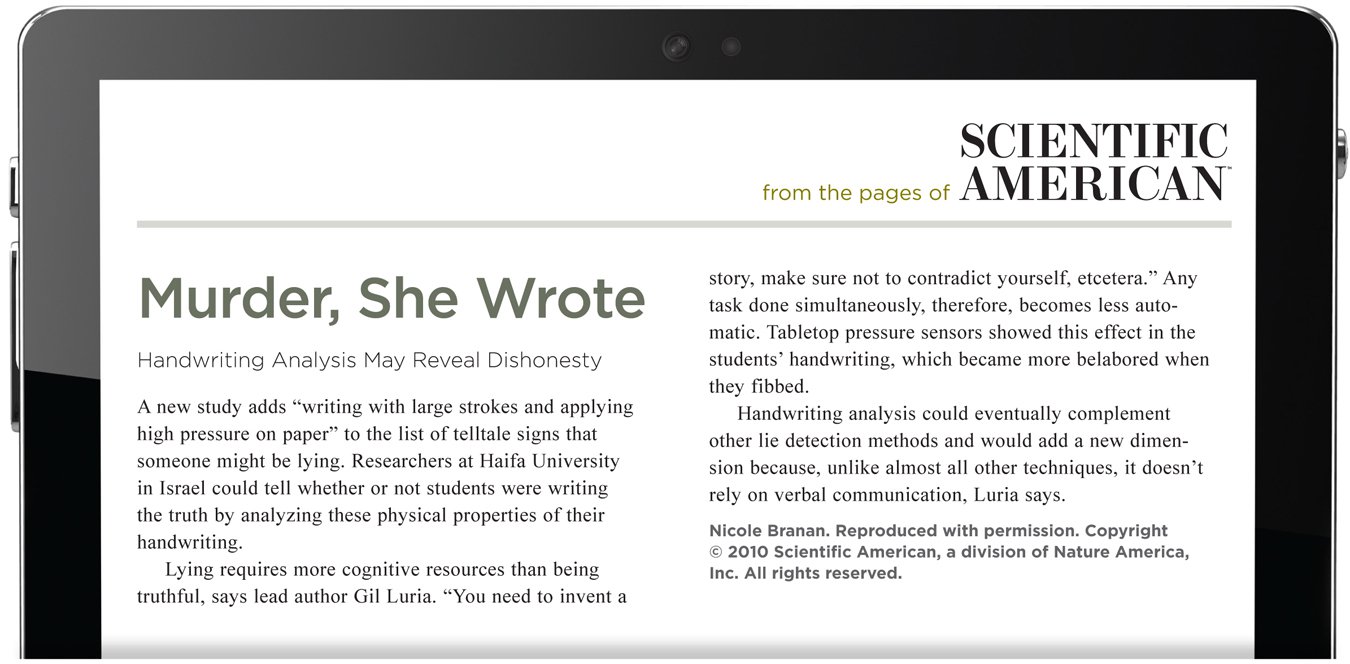Chapter 1. Chapter
Article
From the Pages of Scientific American
Murder, she wrote

Click the image to enlarge. Click "Next" to continue.
1.1 Quiz
1. In Dr. Luria and colleagues’ handwriting study, the stroke size in the handwriting samples and the amount of pressure on the paper from writing are:
| A. |
| B. |
| C. |
| D. |
2. The handwriting study is an example of which kind of scientific method?
| A. |
| B. |
| C. |
| D. |
3. Dr. Luria and colleagues believe that peoples’ handwriting will become labored if they are lying because the cognitive process of writing will suffer when people also have to make up a consistent lie. This statement can best be described as their:
| A. |
| B. |
| C. |
| D. |
4. What advantage of using handwriting analysis to detect falsehoods does the author note?
| A. |
| B. |
| C. |
| D. |
5. Dr. Luria and colleagues published their study in part so that other researchers could try to repeat the study and validate its findings. That process is called:
| A. |
| B. |
| C. |
| D. |